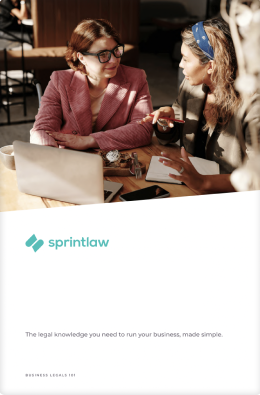Contents
In Australia, employers have a number of obligations to their employees. While there are some general entitlements employees have under Fair Work Australia, there are also specific ones that are unique to the award that the employee falls under.
However, a general entitlement for all employees in Australia is the right to take parental leave. This arises where an employee has given birth to a child, their partner has given birth or they have adopted a child. As such, they can take time off work.
In this article, we’ll cover the details around parental leave entitlements and how your workplace can craft an appropriate Parental Leave Policy.
What Is Parental Leave?
Parental leave refers to an employee’s right to take time off work due to the birth of a child. This usually happens when:
- An employee gives birth
- An employee’s partner gives birth
- An employee adopts a child under the age of 16
Parental leave can be seen as a category of leave entitlements. So, it includes the following:
- Maternity leave
- Paternity (and partner) leave
- Adoption leave
- Special maternity leave
- A safe job and no safe job leave
Who Can Take Parental Leave?
Generally, all employees are entitled to take parental leave in Australia (however, casual employees have additional requirements – we’ll cover this shortly!).
So, employees can take parental leave if they satisfy the following conditions:
- They have worked for their employer for at least 12 months
- They are or will be responsible for taking care of a child
Can Casual Employees Take Parental Leave?
While all employees are entitled to unpaid parental leave, casual employees need to satisfy the following conditions:
- They have worked for their employer for at least 12 months on a regular basis
- There is a reasonable expectation of them continuing to work on that regular basis if the birth or adoption of a child had not occurred
Do Employees Get Additional Benefits?
While every employer owes certain obligations to employees, some go above and beyond the minimum expectations to retain talented employees. So, they go further than what the minimum entitlements require.
These are known as ‘best practice’ employers.
A best practice employer can adopt ‘employer-funded paid parental leave’ as well as additional benefits for employees who want to take parental leave. However, this will need to be set out in their Employment Contract or the Parental Leave Policy (we’ll cover this below).
For example, you could choose to provide flexible work from home arrangements for parents who are slowly returning to work. Another option is to provide paid parental leave, so employees still receive their normal wage during their time off.
Going beyond what is expected of you as an employer is highly attractive for existing employees and potential employees alike. It’s a great look for your business and is beneficial for your business culture moving forward.
Do I Need A Parental Leave Policy?
It’s good business practice to have a Parental Leave Policy in place. It should outline the rules that you have around your parental leave (for example, if you want to provide paid leave instead of unpaid, this should be outlined in your policy so that it is clear to your employees).
A Parental Leave Policy is also essential for transparency in the workplace, so all parties are clear on what they are entitled to and the conditions under which such leave can be requested.
It also ensures a smooth process and transition when such an event does arise.
It’s always a good idea to consult your employees when developing any policy, as this will help maintain consistency with any other workplace policies and practices you may have (this should all be kept in a handy Staff Handbook!).
What Does A Parental Leave Policy Include?
A Parental Leave Policy should basically clarify an employee’s right to take time off work following the expected responsibility of a child.
So, the policy should generally outline the following:
- Entitlements – this includes whether it is paid or unpaid, and any additional benefits you may wish to provide beyond the minimum requirements
- Notice – outline when an employee should notify you of their expected leave dates
- Transition – outline any work arrangements you will have in place to ensure a smooth transition for returning to work
- Communication – discuss how you will keep in touch with employees while they are not at work
- Process – outline how much leave an employee can take, and how to apply for parental leave with your employer
Where Can I Get A Parental Leave Policy?
Getting the right Parental Leave Policy is vital as it needs to be consistent with other workplace policies and cover employees’ entitlements.
At Sprintlaw, we offer a Parental Leave Policy package which includes:
- A Parental Leave Policy drafted in accordance with your business’ requirements
- Phone consultations with a Sprintlaw lawyer who can advise you on the legal issues that apply to you
- A complimentary amendment to the final draft we provide you
Get In Touch With A Lawyer
If you need help with a Parental Leave Policy, feel free to reach out to our friendly team of legal consultants today.
If you would like a consultation on your options going forward, you can reach us at 1800 730 617 or team@sprintlaw.com.au for a free, no-obligations chat.
Get in touch now!
We'll get back to you within 1 business day.











